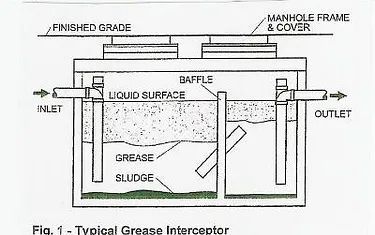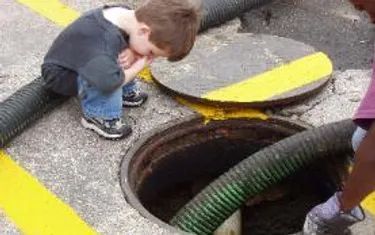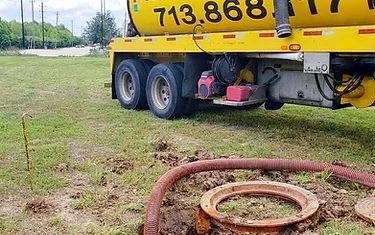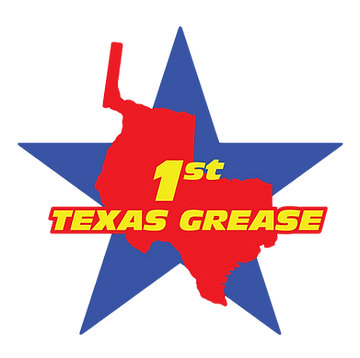Grease Trap Services
Request Service
Hero Request Form
Why are Grease Traps Necessary?
Fats, oils, and greases (FOG) should not be disposed of in sewers or septic systems due to clogs, odors, and pest issues. Commercial kitchens use grease traps to separate grease from wastewater, which is stored on-site until removal by a grease trap service.
Grease traps in commercial kitchens use baffles to slow the flow of sink wastewater, allowing food particles, oil, and water to separate and settle. Clean water continues to the sewer, while oils and solids are retained. Servicing grease traps involves pumping and power washing the tank to remove accumulated oils and solids. Additionally, maintenance may be required for baffles, plumbing connections, and other components.
While advanced grease trap services are less common, it's crucial to choose a service company capable of handling them. When such services are needed, contact First Texas Grease for regular grease trap maintenance. Call now for a free service!
Setting Up Grease Traps Cleaning Service
Regular grease trap cleaning is vital for every restaurant to prevent smelly traps and clogged drain lines. Finding a reliable grease trap cleaning service is straightforward. First Texas Grease will provide you with the necessary services.
Typically, grease trap cleaning involves a pump truck connecting a hose to the trap and emptying it. Some companies also provide additional cleaning, such as pressure washing. An important feature to consider is online recording of manifests, which simplifies compliance with city requirements. First Texas Grease offers this service along with their grease trap cleaning and oil recycling.

What is a Grease Trap?
A grease trap is a device used in commercial establishments, such as a restaurant or hotel, to remove excess amounts of grease which could interfere with proper drainage of waste water. Grease traps are usually located outside of the building and buried below grade, but can also be inside. Wherever it is, we are equipped to handle it!

How do you measure them?
Over the years, the standard shapes of grease traps have changed. Older ones will be cylinders covered by a single lid, whereas new ones are rectangular and have two chambers connected by a 4 inch pipe. Each side has it's own lid. Calculating the size is as easy as finding the volume in cubic feet, and converting that to gallons.

How It Works
When we clean out your trap, we do so as quickly and thoroughly as possible, in order to get the job done, keep the smell down, and get out of your hair. When our technician first gets onsite, he will notify your staff he is there. From then on, he will go to the trap, get a picture prior to cleaning, and begin to vacuum out all the liquids and grease.
While he does that, he will pressure was the grease to break it up, also cleaning the walls of the trap and the back corners. These corners is where grease likes to hid and a place that lots of companies will choose to neglect.
After the trap is clean, your technician will take a picture of both sides of the trap as assurance to you that it was cleaned. Once he packs up and cleans up the area around the trap, he will fill out a manifest for you to sign, as per city ordinance. From then, he will dump, and we will send you your copy of the dumped manifest in the mail.
City Ordinance on Grease Traps
Sec. 47-512. Cleaning and maintenance requirements.
(a) Generators shall clean or cause to be cleaned, each interceptor and holding tank as often as necessary to comply with the effluent discharge parameters in this article to ensure that sediment and floating materials do not impair the efficiency of the interceptor, and to ensure that no visible fat, oil or grease (FOG) is observed in the sample well.
(b) Each interceptor or holding tank shall be fully evacuated at least once every 90 days.
(c) Each interceptor or holding tank shall be fully evacuated more frequently than once every 90 days when:
(1) Twenty-five percent or more of the wetted height of the grease trap or interceptor, as measured from the bottom of the device to the invert of the outlet pipe, contained floating materials, sediment, oils or greases; or
(2) The discharge exceeds the discharge parameter set in this article; or
(3) There is history of non-compliance.
https://www.houstonconsumer.org/services/permits/special-waste-permits/special-waste-generators
Need An Old Manifest Now?
We're the only company in Houston, TX who uploads this information for you. The health inspector requires you to have at least 5 years of history of this information.
Reviews
Related Services
Learn More About
First Texas Grease
Serving the Houston, TX area. First Texas Grease specializes in cooking oil recycling and grease trap services. Over 13 years of industry experience. Guaranteed satisfaction. Silent pump outs. Call us today.


Share On: